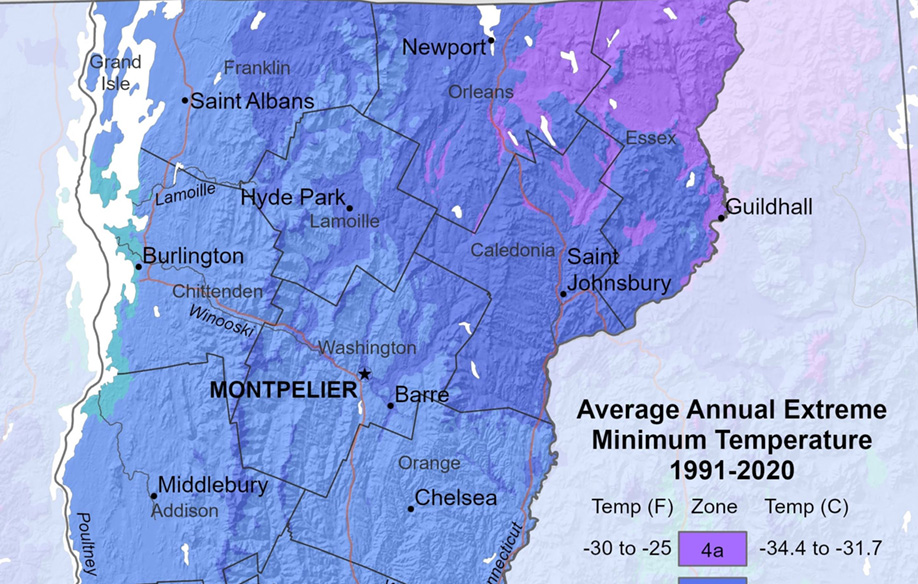
photo courtesy of USDA Agricultural Research Service
Gardeners can use the USDA Plant Hardiness Zone Map for their state to determine their zone and select appropriate plants for their garden.
by Deborah J. Benoit, Extension Master Gardener, University of Vermont
NORTH ADAMS, Mass. – There are countless things that can go right or wrong in a garden. Some of them are obvious: too much or too little water, diseases, pests and critters that nibble on our plants. Other things that can make or break your gardening efforts are less obvious. It’s those little details that can be so very important.
If you’ve purchased perennial plants or started them from seed, you’ve likely seen notations such as “hardy to zone 5” or “USDA Zones 4a-9b” on the package or in the product description. This is vital information for gardeners because plants suitable for your U.S. Department of Agriculture Plant Hardiness Zone are far more likely to grow successfully for you, barring unusual weather conditions.
The USDA Plant Hardiness Zone map is based on information collected over a 30-year period from 1991-2020 from over 13,000 weather stations across the country. The map assigns locations a zone number (1a-13b) using extreme minimum winter temperature data. A lower number/letter combination indicates cooler low temperatures.
Knowing the zone for your location and for the perennial plants (including shrubs and trees) you intend to include in your garden are key pieces of information for successful growing. Even if you already know your location’s zone number, it’s a good idea to check the newly published 2023 map before purchasing seeds or plants. The zone designation for many locations has changed since the last update in 2012 (for example, from zone 4a to 4b or from zone 4b to 5a).
You can find your location’s USDA Plant Hardiness Zone by entering your zip code at planthardiness.ars.usda.gov.
While you are plant and seed shopping, you may see some plants labeled as “tender perennials.” These are plants that will come back year after year in an appropriate zone but which will not survive freezing conditions. Often such plants are sold or treated as annuals in colder zones such as those here in New England, or they can be brought inside before the first frost to overwinter indoors.
In addition to knowing your zone, it’s important when selecting plants and seeds to know the length of your growing season. By determining your average last and first frost dates, you can easily calculate the anticipated length of your growing season. Simply count the number of days between the last likely spring frost and the probable date of the first frost in the fall. That is the average length of your growing season.
This is important when selecting annual vegetables and flowers for your location. Look for the number of days to maturity on seed packets.
For example, if your growing season is only 100 days long and the tomato variety you want to plant requires 120 days to harvest, you may be very disappointed in the fall when temperatures drop and a freeze puts an end to your plants before you’ve tasted a single tomato. By selecting a variety with a shorter number of days to maturity, you’re far more likely to enjoy the fruits of your garden before cold arrives in the fall.
Information concerning last frost dates (in the springtime) and first frost dates (in the fall) can be found by entering your zip code at garden.org/apps/frost-dates.
By keeping in mind what USDA Plant Hardiness Zone your garden is in, along with the estimated length of your growing season, you’ll be able to choose the perennial plants and seeds most suitable for successful growing in your location.
[Deborah J. Benoit is a UVM Extension Master Gardener from North Adams, Mass., who is part of the Bennington County Chapter.]





